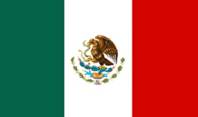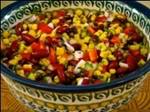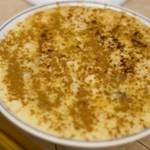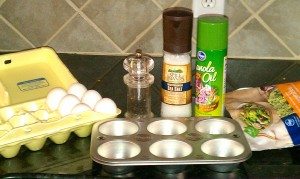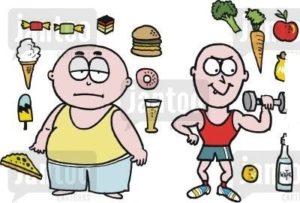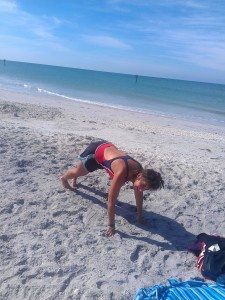Ilana Katz MS, RD, CSSD
INTRODUCTION
Sodium is an essential mineral for life. It’s biochemical functions include normal cell function, blood volume regulation, blood pressure/body fluid regulation, pH homeostasis, and heart function. Because sodium in excess can result in increased blood pressure there is a fine line between balancing athletic electrolyte intake to replenish sweat values, and the dietetic recommendations on sodium intake to reduce heart disease.
Most medical organizations recommend low or moderate sodium intake for the general population. Above and beyond the general population, are endurance athletes, whose needs may differ, based on their exceptional loss of sodium through sweat. Sodium ingestion by endurance athletes does not typically increase blood pressure, so low sodium diets are not typically recommended for endurance (and various other athletes too).
I thought it may be useful to outline some alternative points of view for endurance athletes. Note however, although regular physical activity in itself reduces the risk of hypertension, no athletes are immune to hypertension. Furthermore, sodium loss during exercise depends on individual factors, such as genetics, fitness and heat acclimatization, intensity and duration of exercise and the external environment. Athletes, just like everyone else should thus monitor their general health and blood pressure statistics.
Blood Pressure
Statistics are commonly reported in wellness studies that approximately one third of the population may be sensitive to sodium taken in as part of the diet that result in hypertension. The kidney is of primary importance in sodium sensitive hypertension due to its ability to regulate sodium and any dysfunction can cause lead to hypertension .
In healthy people, typical sodium intake does not cause sustained hypertension. Athletes and most normal weight, active people have a lower hypertension risk because studies have consistently shown that blood pressure can be lowered by weight loss and regular aerobic exercise. Moreover, sodium is an essential component of most athletes’ diets because sodium ingestion helps restore total body water and fluid-electrolyte balance by replacing sweat sodium losses.
It is important, however, to note that athletes are not immune to hypertension, and athletes who participate in sports in which large muscle mass and weight lifting are required should monitor blood pressure closely. Sodium intake in this subset of athletes should be considered with the same risks as an inactive person, and be proportional to sweat losses.
Sodium Mechanism
Sodium’s main biochemical functions are the regulation of body water, electrolyte balance and blood pressure which are all connected to the brain for a stimulation of thirst through receptors in the heart known as baroreceptors. Changes in central volume or blood sodium concentration initiate a response including adjustments in thirst and sodium appetite, sympathetic nervous system activity, and renal fluid regulating hormones. In layman’s terms, this means we either get thirsty and/or have salt cravings as required.
Sodium loss during exercise
Sodium loss occurs in most r physical activities, and the duration of the activity further increases sodium losses over time. This loss is exaggerated during exercise in the heat and humidity. Most of the fluid volume loss is a directly related to the sodium lost in sweat. Individuals have varying sweat rates as well as sweat concentrations (the concentration of sodium in the sweat) and the amount of sodium that is lost depends on both of these.
Sweating is related to various factors, such as genetics, diet, body weight, heat acclimatization, fitness levels and other physiological traits, thus there is a wide variation in the amount of sweating and sodium loss among athletes. This variability remains even if all other factors such as the intensity and type of activity are the same and are performed in the same environmental conditions. However, some sodium will be lost during endurance exercise in all athletes and the extent of the loss determines how much sodium needs to be replaced. While some of the sodium released in sweat is reabsorbed by the sweat gland, sweat sodium loss during exercise (especially in the heat) occurs more rapidly than it can be reabsorbed, so much of the sodium in sweat is lost. Heat acclimatization improves sodium (and other electrolyte) reabsorption so heat acclimatized individuals usually have a lighter sweat concentration for any given sweat rate.
Sodium Ingestion for Athletes
Endurance athletes have been known to lose up to 2 – 3% of their weight in an event lasting 2 hours. This can result in about 1.5 to 2g of sodium loss every 90 minutes or so. As both the body water volume is reduced and sodium is lost, an increase in the concentration of sodium in plasma results.
The American College of Sports Medicine position stand “Exercise and Fluid Replacement” provides specific information on the sweat sodium lost during various activities. Although there is wide variation across individuals and activities, this position stand indicates that athletes can lose as much as 5 g sodium in sweat during a single high intensity workout. Thus, during endurance exercise, the sodium ingestion plays an important role to minimize dehydration and assist with body fluid maintenance and electrolyte balance. Sodium ingestion not only replaces some of the sodium lost in sweat, but induces the thirst drive to aid the athlete to continue drinking and increase fluid consumption. To kill two birds with one stone per se, the athlete should use sports drinks with sodium concentrations that are formulated to match their sweat rate, or supplement their fluid intake with salt tablets or electrolyte supplements if their sweat is typically highly concentrated.
Thirst
Body water volume restoration is assisted by hormones and baroreceptors that initiate a thirst sensation. Fortunately, the thirst sensation is extremely sensitive to changes in sodium within the blood, and as little as a 2% change will induce thirst. These thirst mechanisms during endurance exercise are most effective for training or events under two hour typically. They tend to desensitize after longer periods of time due to a number of other factors offering interference with the thirst mechanism over time. For example, the mere act of swallowing suppresses the thirst sensation.
To optimize performance in longer events, athletes should therefore have a liquid intake strategy that includes a sodium replacement element.
Endurance Associated Hyponatremia (salt levels too low)
As noted earlier, a ~ 2-3% loss in total body water with a simultaneous increase in plasma sodium concentration is fairly common for marathoners. Unfortunately this condition is one of the highest causes of death in endurance sports, and therefore these facts should be carefully noted, particularly by athletes. Athletic hyponatremia is associated with several serious symptoms, such as confusion, nausea, light-headedness, dizziness and fatigue In severe cases, the consequences of brain swelling can cause permanent damage from which some athletes do not recover.
The best way to avoid the risk is to be sure that fluid intake does not greatly exceed fluid loss. Athletes can track this by monitoring fluid intake as well as the volume and concentration (color) of urine.
Unfortuanetly, mechanisms contributing to endurance associated hyponatremia have been difficult to study because most investigations in the area are retrospective: that is, athletes who have become hyponatremic during a long distance event are already at the finish line, or receiving treatment in medical tents. These studies have their limitations in that they may miss subjects with who are asymptomatic and recover on their own. The studies available therefore are only regarding extreme cases or athletes who are more sensitive to hyponatremia and experience symptoms with only small changes in plasma sodium.
PRACTICAL APPLICATIONS
- There is large individual variability across athletes and/or active people in sodium losses through sweating, so athletes should evaluate sodium and fluid losses during workouts.
- Athletes should practice their fluid replenishment strategies as they are training for the event, and learn which products will be provided by the race organizers along the route. They should have a good idea of what provides optimal sodium for their levels (drinks, snacks, etc.) in case those at the race need to be supplemented with their own stash.
- Combining urine examination to determine how dark or light the urine is with measurement of a usual body weight can provide an indication of any significant changes in hydration status.
- Sodium ingestion during long term exercise
-
- improves hydration through volume retention
- increases plasma sodium content
- maintains thirst for reminder signals
- stimulates the kidneys to retain water
- One liter (34 oz) of a well designed sports drink will typically provide 460 mg of sodium.
- Although body fluid status related to dehydration and endurance associated hyponatremia (often a result of excessive drinking) is completely different, some of the symptoms, such as confusion, nausea, light-headedness, dizziness and fatigue can overlap. Therefore, if changes in body weight or a blood sample cannot be attained, assessment of fluid intake and urination during the (training) event is important before deciding on treatment.
- Athletes who lose large volumes of sweat should consider supplementing additional sodium in the form of sports drinks with greater sodium content or bars, gels, electrolyte powders/tablets, or salty snacks that provide extra sodium.
- Many sports drinks are hypotonic to blood plasma (has a lower salt concentration to blood plasma,) so athletes who use sports drinks should not assume that they are immune hyponatremia.
SUMMARY
Thirst, drinking and hormonal regulation of fluid balance are tightly controlled through homeostatis. Blood plasma sodium concentration is a potent thirst stimulus at rest, during exercise and in the post-exercise rehydration period. Sodium ingestion is a recommended means to continue a thirst inducing drive to ensure adequate rehydration.
The sodium can come as a part of the athlete’s diet, but after long lasting endurance exercise, especially in the heat, the athlete may want to consider salty snacks or drinks with electrolytes. Sodium ingestion and maintenance of sodium concentration also stimulates renal mechanisms to reduce water loss in urine and conserve fluid.
